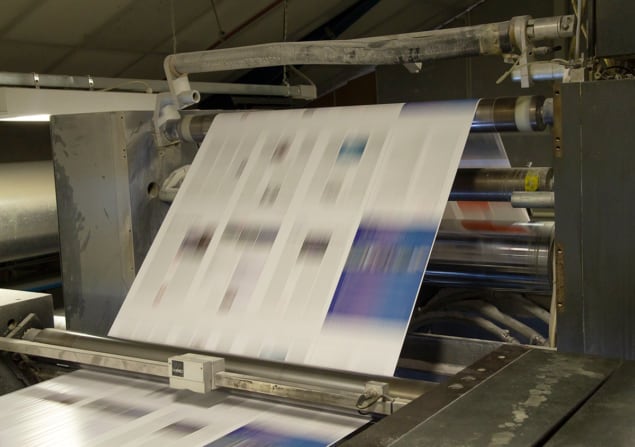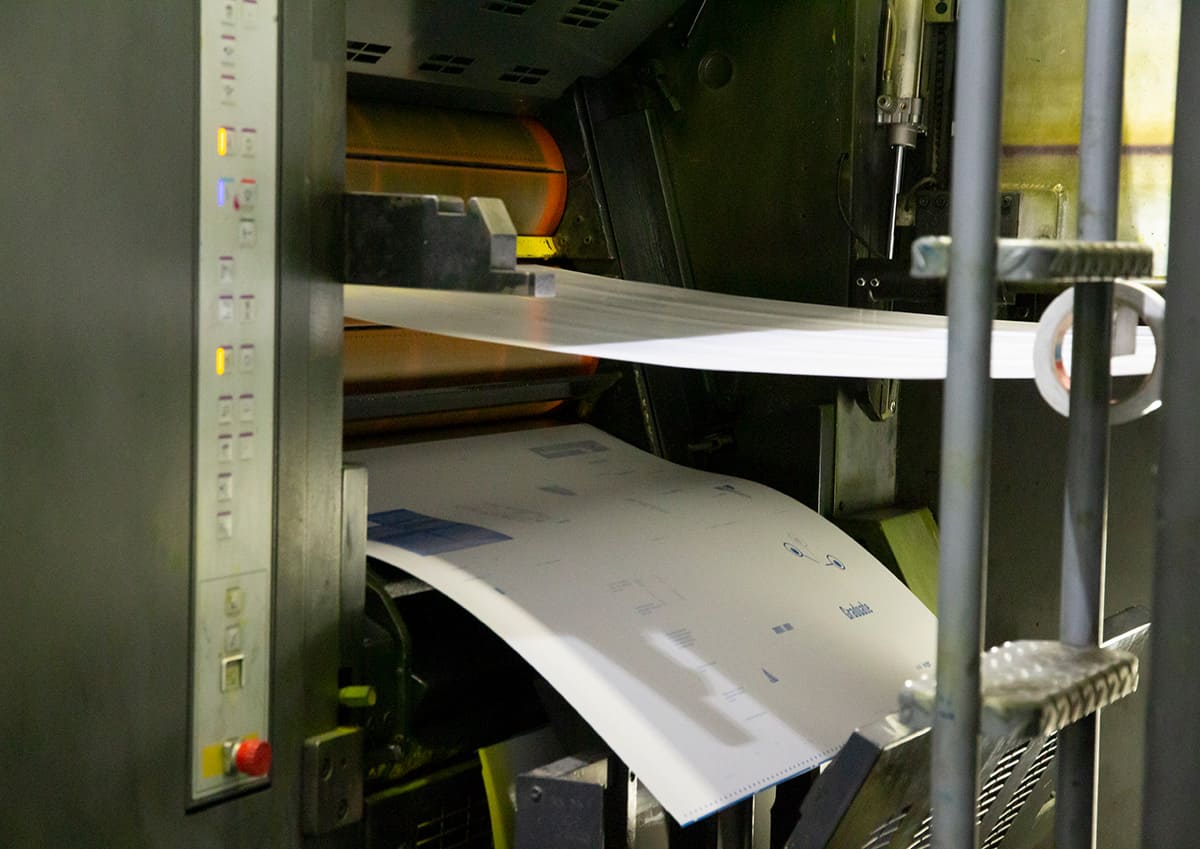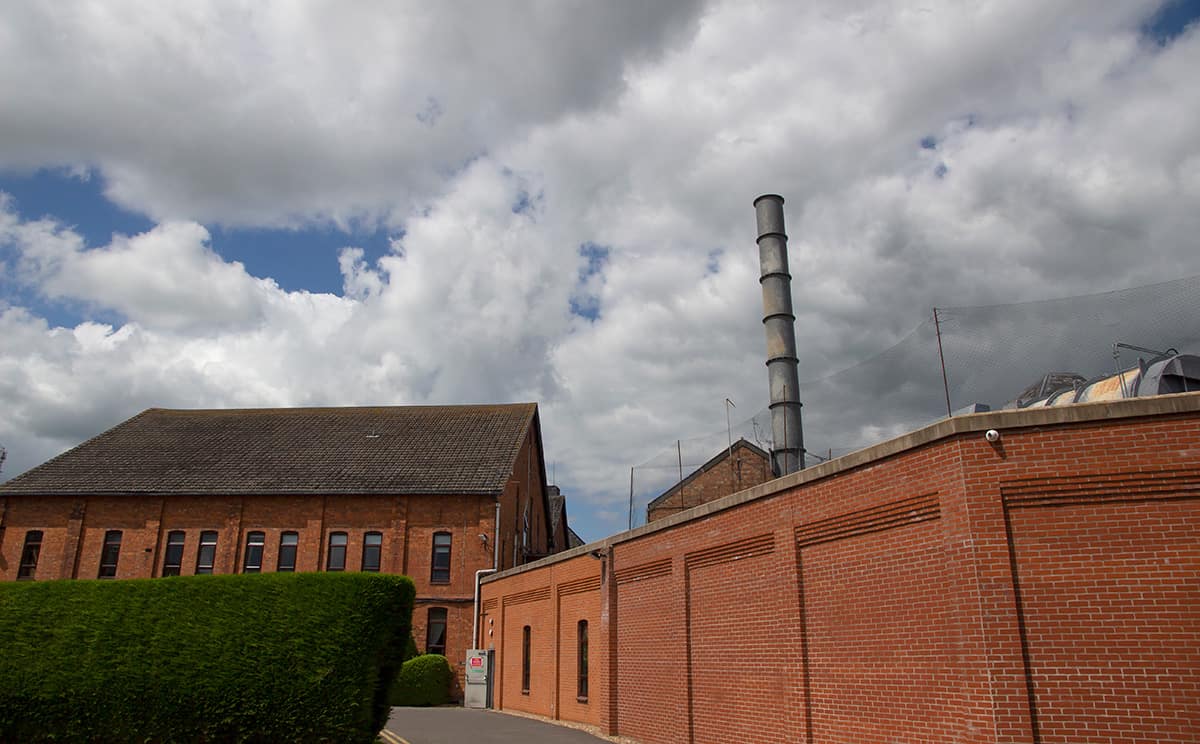
In the small country town of Bourne, Lincolnshire, just a minute’s walk from the high street, a steady stream of people are arriving at and leaving an attractive redbrick building that was originally a malthouse. It’s shift change at Warners Printers, which has printed every issue of Physics World for the last 30 years. I made the journey from Bristol last week to find out more about our longest-serving supplier, quiz them about their (excellent) environmental standards and – this is the fun bit – see the July issue of Physics World being printed before it’s posted out to members of the Institute of Physics later this week.
I was met by our account manager Adam Lees and introduced to the managing director Philip Warner, as well as his son Michael Warner who is the marketing manager. Adam and Michael showed me all seven of Warners’ printing presses – four web presses and three sheetfed (Physics World uses both kinds) – and gave me a refresher course on the whole offset printing process, from pre-press checks to final binding and packaging. It used to be standard practice for production managers like me to go to the printer on press day, but this was my first experience of seeing something on the press that I had produced myself and I was pretty excited.
The first stage is imposition. Apart from the cover, Physics World is printed in 16-page sections. A clever piece of software calculates which page goes where so that when the 16 pages are folded and stacked with all the other sections, the final result has all the pages in the correct order and the right way up. Warners always does a manual check of this stage. (In a previous life working in book publishing, one of my first tasks was checking that all the pages were in order – you’d be surprised how often this can go wrong.)

These impositions are sent to the plate-making room, where eight plates are made for each section: cyan, magenta, yellow and black; top and bottom. The plates are aluminium – Warners’ second biggest raw material, chosen because it’s lightweight, flexible and 100% recyclable. The plates have a thin coating of light-sensitive material. Exposure to light and chemicals means that the areas that need to be inked are made oleophilic and hydrophobic, while the areas that are not to be inked are made oleophobic and hydrophilic.
The plates are now loaded onto the press and wrapped around cylinders. The oil-based ink is attracted to the plate in all the right places and then transferred to a long reel of paper. On a web press, both sides of the paper are printed at the same time, in a sheet-to-sheet process that is extremely fast. A sheetfed press does the four colours on one side then flips the paper over to do the other side. This sheet-to-metal process is slower but slightly sharper – as well as being able to accommodate thicker paper – so it is mostly used for covers (including ours). At the end of the line, the printed sheets come out flat, with a tiny quantity of starch puffed in-between each to prevent them from sticking together.

What I hadn’t realized before my visit is that the web presses, in contrast, dry and fold the sheets. After printing, the paper runs through a hot oven then onto cold rollers, all carefully calibrated for maximum drying with zero paper distortion. Puffs of air and vacuum are then used to fold the sheet. Blades and glue are applied so that the conveyor belt at the end of line carries running sheets already prepared for binding.

The web presses are newer technology, and as well as being fast, they also calibrate the inks more quickly each time they start up, which reduces paper wastage (as well as ink and electricity use). This is a big consideration for Warners, paper being by far its most used raw material. The biggest presses get through around 40 km of paper per hour. Each issue of Physics World uses approximately 4 tonnes of paper. All the waste paper is of course recycled (in fact, Warners reuses or recycles 99.98% of all its waste materials – the 0.02% being from spill kits or cleaning supplies) but work is ongoing to reduce waste in the first place. The paper is FSC or PEFC certified wherever possible.

I was curious about the big chimneys in each of the printing halls. These are regenerative thermal oxidizers (RTOs), which break down any volatile organic compounds created by the presses. They use the calorific value of the gases they burn off to sustain themselves. Warners only uses electricity from renewable sources, which includes its own array of solar panels, and has been making great strides in reducing gas and electricity consumption.

We don’t use Warners for our distribution to members, but I was still curious to talk about packaging alternatives to plastic, as it’s something we’ve been looking into for the past year. It’s a more complex issue than it appears at first glance. You’ll be hearing more about that soon.
It was a great trip, and the sun came out in time for me to enjoy a stroll around the large Wellhead Gardens park next door to Warners before I headed home. It’s easy to see how this printing company has flourished where others have folded, and why we have stuck with the partnership for so long.



